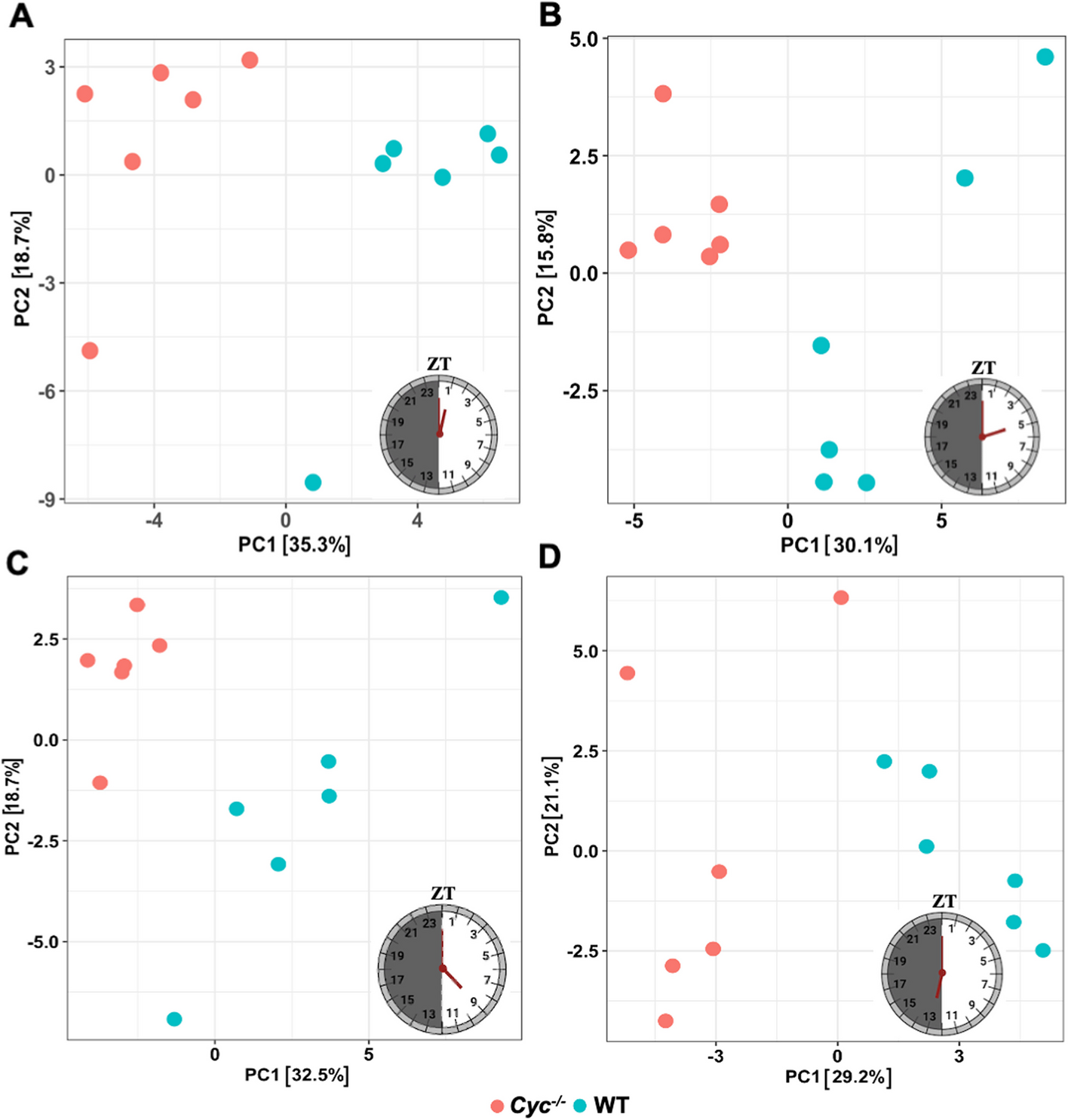From the BugBitten Archives: Clocking out -knocking out circadian clock gene disrupts key functions in Aedes mosquitoes
Published in Microbiology and Zoology & Veterinary Science

This blog was originally posted on the old BugBitten WordPress site . We are resharing it now on the Research Communities site.
Aedes aegypti is a species of mosquito that is a disease vector for several arboviral diseases such as dengue, Zika and chikungunya that affect millions of people globally. Many of these diseases do not have vaccines readily available, and so a lot of emphasis is put on controlling the spread of the vector. Molecular approaches to vector control have been emerging over the past ten years, with genetically modified mosquitoes being released into the wild to control breeding in mosquito populations.
Vinaya Shetty and colleagues have been looking at another way to disrupt mosquito populations, by investigating whether removing key genes related to the circadian clock of the mosquitoes could impact their clock-dependent biological processes.

Mosquitoes display time-related behaviours such as feeding at certain times of the day. For A. aegypti feeding is a day time activity – mainly in the early morning and late afternoon – whilst the anopheline mosquito is a nocturnal feeder.
In their 2022 study, Vinaya Shetty and colleagues knocked out the core clock cycle gene in A. aegypti using CRISPR/Cas9 and found the mRNA expression of 7 circadian related genes were changed. This knock out affected the mosquito’s longevity, feeding pattern and reproductive fitness. Their latest study explored this further by using transcriptome profiling and differential gene expression to determine the network of genes and biological pathways that were affected by disrupting the clock gene.
Differential gene expression enabled Shetty and colleagues to identify thousands of genes that were expressed differently in day-night cycles, and determine that removal of the cycle gene caused disruption in metabolic processes, signaling pathways and immune responses. This showed the vital role that the circadian clock plays in A. aegypti’s life, and targeting it could see massive changes to the mosquito’s behaviour and consequently neutralise its impact as a disease vector.
Cover image credit: Gerd Altmann from Pixabay
Follow the Topic
-
BMC Genomics

This is an open access, peer-reviewed journal that considers articles on all aspects of genetics, genomics and proteomics.
-
BugBitten

A blog for the parasitology and vector biology community.
Related Collections
With Collections, you can get published faster and increase your visibility.
Genomics of microbiomes
The study of microbiomes has emerged as a dynamic field at the intersection of genomics, ecology, and health sciences. Microbiomes encompass the diverse communities of microorganisms, including bacteria, viruses, and unicellular eukaryotes, residing in various environments, such as the human body, food, soil, and aquatic systems. Understanding the genomic makeup of these microbiomes is crucial for unraveling their complex interactions with hosts and the environment. As advances in sequencing technologies, including single molecule sequencing, metagenomics and single cell omics, continue to evolve, researchers are better equipped to explore the rich genetic diversity (including pangenomes and epigenomes) and functional capacities of microbiomes across different ecosystems.
Investigating the genomics of microbiomes is pivotal for addressing critical questions in ecology, health, disease, and environmental sustainability. For instance, recent breakthroughs in the field have illustrated how microbiomes influence human health, from their roles in metabolism and immune function to their impact on mental health. Furthermore, understanding the genomics of environmental microbiomes can provide insights into biogeochemical processes and ecological resilience. As we deepen our knowledge of these microbial communities and develop computational biology methods to model their functionality, we stand to enhance our ability to harness their potential for applications in medicine, agriculture, and environmental management.
Future research in this area holds the promise of transformative advances in our understanding of microbiomes. The integration of multi-omics approaches, combining genomics with transcriptomics, proteomics, and metabolomics, may lead to a holistic view of microbial community dynamics and their functional implications. Additionally, developments in artificial intelligence and machine learning could further accelerate discoveries, enabling the identification of novel microbial functions and their roles in health and disease. As we continue to explore these intricate relationships, we can anticipate innovative strategies for harnessing microbiomes for therapeutic and environmental applications.
Topics of interest include, but are not limited to:
•Genomics and epigenomics of host-microbe interactions
•X-omics studies in environmental and host-microbiomes
•Advances in genomics of unculturable microorganisms
•Genome-guided development of synthetic microbiomes and consortia
•Microbiomes and environmental resilience: a genomic perspective
•The human microbiome: genetic diversity and functional potential
•Microbial adaptation and evolution in changing environments
•The role of microbiomes in antibiotic resistance and pathogenesis
•Computational and AI-driven methods for microbiome genomics
•Microbiome applications in sustainable agriculture and environmental management
All manuscripts submitted to this journal, including those submitted to collections and special issues, are assessed in line with our editorial policies and the journal’s peer review process. Reviewers and editors are required to declare competing interests and can be excluded from the peer review process if a competing interest exists.
Publishing Model: Open Access
Deadline: Jan 07, 2026
Genomics of symbiosis
BMC Genomics is calling for submissions to our Collection on Genomics of symbiosis. The study of symbiosis, particularly the genomic underpinnings of these complex interactions, has emerged as a pivotal area of research in understanding the relationships between organisms. Symbiosis encompasses a range of interactions, from mutualism to parasitism, and is crucial for the survival and evolution of many species, including both invertebrates and vertebrates. A well-documented example is the mutualistic association between sea anemones and clownfish, where the anemones provide protection for the fish, and the fish, in turn, help to ward off predators and parasites.
Recent advancements in genomic technologies have enabled researchers to dissect the genetic and molecular mechanisms that facilitate these interactions, revealing the intricate networks of collaboration between host organisms and their partners. The advent of next-generation sequencing technologies, which offer significantly lower costs compared to traditional Sanger sequencing, along with much higher throughput, has made it possible to sequence genomes at an unprecedented scale, leading to a rapid increase in available genomic data. This influx of genomic information has accelerated our understanding of symbiotic relationships by allowing researchers to explore the diversity of symbiotic organisms across species, uncover novel symbiotic genes, and gain insights into the evolutionary dynamics of these interactions.
Advancing our collective understanding of the genomics of symbiosis is essential for several reasons. It not only enhances our knowledge of ecological dynamics and evolutionary processes but also has significant implications for biotechnology, agriculture, and medicine. Important advances in this field include the identification of key genes involved in symbiotic relationships and the elucidation of metabolic pathways that support mutualistic interactions. These insights can inform strategies for harnessing beneficial symbioses in various applications, from improving crop resilience to developing novel therapeutics. For example, understanding the symbiotic relationship between legumes and nitrogen-fixing bacteria has led to advances in sustainable agriculture by promoting natural nitrogen fertilization, reducing the need for chemical fertilizers and enhancing crop productivity.
The growing availability of genomic data through advanced sequencing technologies is likely to reveal new, previously unrecognized symbiotic relationships. A recent example is the discovery of Syntretus perlmani, a parasitoid wasp that parasitizes adult fruit flies and manipulates the biology of its host to support its offspring's development. By adding more genomes to the databases, researchers can identify novel genetic markers and pathways that may indicate undiscovered associations between species. This could lead to breakthroughs in various fields, from ecology to biotechnology.
Potential topics of interest include, but are not limited to:
•Genomic insights into mutualism
•Bacterial symbionts in invertebrates
•Evolutionary genomics of symbiotic relationships
•Symbiotic fungi and their hosts
•Genomic adaptations in vertebrate symbiosis
•Genomic analysis of endosymbiotic relationships
•The role of horizontal gene transfer in symbiotic interactions
•Genomic adaptations to environmental stress in symbiotic systems
•The impact of climate change on symbiotic relationships and their genomic responses
•Comparative genomics of symbiotic organisms across different ecosystems
•The role of epigenetics in symbiotic relationships
This Collection supports and amplifies research related to SDG 3: Good Health & Well-Being, SDG 14: Life Below Water, SDG 15: Life on Land.
All manuscripts submitted to this journal, including those submitted to collections and special issues, are assessed in line with our editorial policies and the journal’s peer review process. Reviewers and editors are required to declare competing interests and can be excluded from the peer review process if a competing interest exists.
Publishing Model: Open Access
Deadline: Jan 15, 2026






Please sign in or register for FREE
If you are a registered user on Research Communities by Springer Nature, please sign in